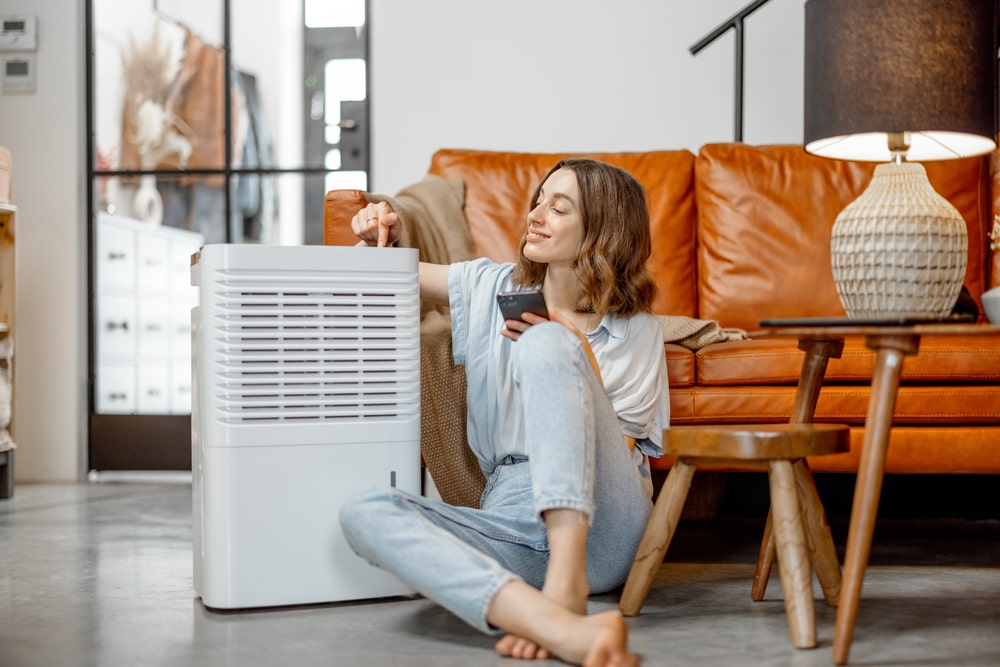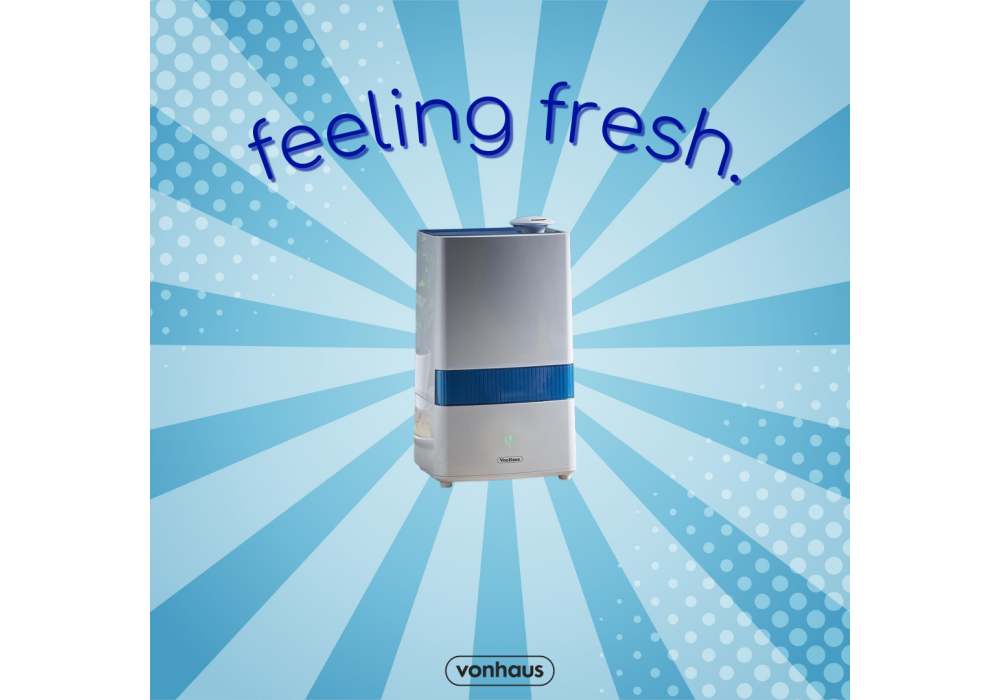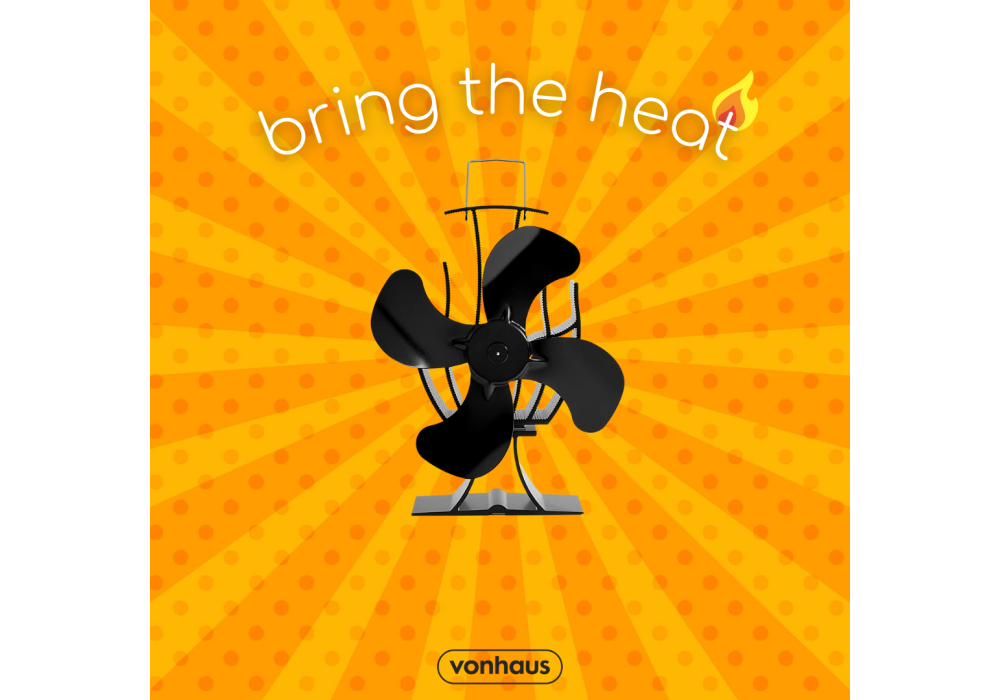The VonHaus Dehumidifier Guide 2024


You may have heard about dehumidifiers, those magical devices that work wonders in homes. But what exactly do they do, and how do they achieve it? If you've ever wondered about the benefits, drawbacks, and inner workings of dehumidifiers, you've come to the right place.
In this bumper guide, we explain the various functions of dehumidifiers, from ridding your home of damp and mould to drying your clothes! So, let’s demystify these wonder gadgets and breathe new life into your space.
What does a dehumidifier do?
In simple terms, a dehumidifier sucks excess moisture from the air until the relative humidity reaches your desired comfort level. Once it hits that sweet spot, it continues its work silently, without you needing to lift a finger.
Understanding relative humidity
Before delving deeper, it's crucial to grasp the concept of relative humidity. This metric tells you how much water is present in the air relative to the maximum it can hold at a given temperature. When the relative humidity hits 100%, we're at the "dew point" where water condenses on any surface. As temperatures drop, relative humidity rises despite the consistent water content. Remember, warm air can hold more moisture than cooler air.
What relative humidity should my home be?
Maintaining a relative humidity of around 50% is the sweet spot for your home. Not only does it keep your living space comfortable, but it also shields your belongings, prevents mould growth, and curbs dust mite populations. However, excessively low humidity, below the 45-50% mark, can spike your energy bill without delivering any additional perks.
Where does the water come from?
You might wonder where all that water in the air comes from. Well, it's always there, indoors and outdoors, but its concentration varies. Routine activities like cooking, showering, or even maintaining house plants can amp up indoor humidity levels, creating the perfect breeding ground for discomfort. You might be surprised just how much moisture is in the air, too. This author’s dehumidifier pulled a pint of water from the air in its first two hours of use!
How does a dehumidifier work?
Most dehumidifiers use a cooling coil, chilling the air to ultra-low temperatures via a refrigeration system. As the air passes over the coil, water vapour condenses and collects in the water bucket below. Some units use desiccants, passing air over a water-absorbing material to achieve the same effect. These workhorses ensure your space stays dry and cosy.
How much water does a dehumidifier remove?
The amount of water a dehumidifier removes hinges on several factors, including its power, the room temperature, and the current relative humidity. While a 12-litre dehumidifier may not extract a full 12 litres in 24 hours, it can still significantly reduce the moisture content in the air, contributing to a drier and more comfortable environment. Just remember to regularly empty the water collection bucket (typically every two days or up to twice a day), depending on the prevailing conditions.
Will a dehumidifier help with mould?


Absolutely! Dehumidifiers are champions in the battle against mould and mildew. By maintaining optimal humidity levels, typically around 50% or slightly lower, they create an environment that discourages mould and mildew growth. However, they aren't a silver bullet. If your space already harbours mould, you'll need to address the underlying issue before relying solely on a dehumidifier. Keep in mind that prevention is always better than a cure.
Will a dehumidifier get rid of damp?
A dehumidifier is a powerful tool against dampness, provided it's appropriately sized and the room doesn't face severe damp problems. For flood-damaged spaces, you might need multiple dehumidifiers alongside specialised equipment to speed up the drying process. Always consult professionals for complex water damage issues.
Do dehumidifiers dry clothes?


While dehumidifiers aren't designed specifically for drying clothes, they can certainly lend a helping hand. Placing your damp laundry in a room with a dehumidifier can accelerate the drying process. The dry air created by the dehumidifier helps absorb moisture from the clothes, reducing drying time significantly. However, it's important to note that for a full load of laundry, a dedicated clothes dryer will be more efficient.
How long does a dehumidifier take to dry clothes?
The time it takes for a dehumidifier to dry clothes depends on various factors, such as the room's humidity level, the size of the load, and the dehumidifier's capacity. In a moderately humid room, a dehumidifier can expedite the drying process, shaving off precious hours compared to leaving clothes to dry naturally. However, it's essential to manage expectations; while it can speed up the process, it won’t match the performance of a purpose-built clothes dryer.
When should you use a dehumidifier?
Using a dehumidifier becomes essential in various scenarios. If your home feels stuffy and damp, or if you notice condensation on windows or a musty smell in the air, it's time to bring in the dehumidifier. In humid climates or during wet seasons, running a dehumidifier regularly can keep your living space comfortable and prevent moisture-related problems. Remember, prevention is key; it's better to control humidity proactively than to deal with the consequences of excess moisture.
What size dehumidifier do I need?
Choosing the right-sized dehumidifier is crucial for optimal performance. Consider the size of the room and its current dampness levels. Most dehumidifiers are classified based on house size, making it easier for you to make the right choice. Opt for a larger dehumidifier if you're unsure, as it will efficiently remove more water per unit of energy spent and operate for fewer hours compared to a smaller unit. Keep an eye on energy efficiency, as the savings over time can surpass the initial price difference.
Can you sleep with a dehumidifer on?
Sleeping in the same room as an active dehumidifier is safe, and it'll ensure you wake up in a comfortable, moisture-free environment. Just make sure the unit's noise level isn't disruptive, or consider moving it to a location where its hum won't disturb your slumber. Fortunately, most dehumidifiers have a sleep mode which is quieter than regular mode.
Disadvantages of dehumidiers
While dehumidifiers work wonders, don't go overboard. Overly dry air can lead to irritated skin, itchy eyes, and other respiratory problems. Moderation is key; let the dehumidifier work its magic, but don't let it transform your home into a desert.
Dehumidifiers play a crucial role in maintaining a comfortable, healthy home. By balancing moisture levels and preventing the growth of mould and mildew, they safeguard both your health and your precious possessions. However, remember that moderation is key; don't turn your abode into a barren desert. Let your dehumidifier work its magic, but keep an eye on the humidity levels for a balanced, cosy space.
For more home device guides, handy how-tos, and interior inspiration, visit our blog today!




 Need help?
Need help?

